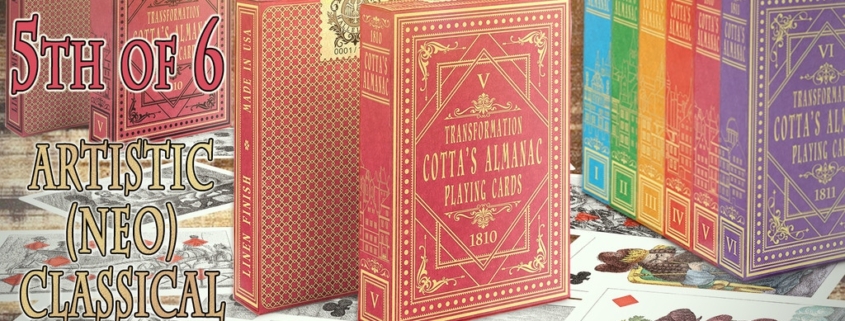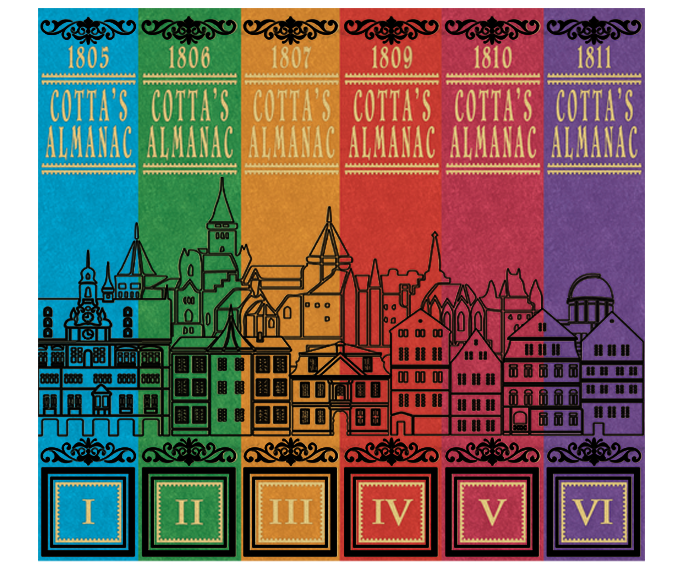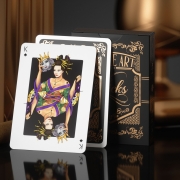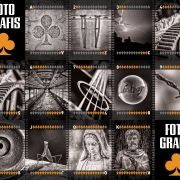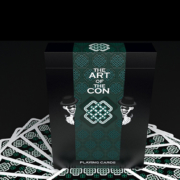COTTA’s ALMANAC #5 Playing Cards. The penultimate volume in a great series of transformation decks
The Emperor Augustus wanted to attribute a mythical origin to the Roman Empire and, to glorify it, he asked the poet Virgil to write a great epic. In meticulous work of more than ten years, Virgil rewrote the works of Homer to present the founding of Rome with the use of all the Greek myths in The Aeneid. This great work of universal literature has been an inspiration for artists of all times and also, in some way, for COTTA’S ALMANAC #5 deck.
This is the fifth volume in this series of transformation decks produced by Will Roya (PlayingCardsDecks.com). A project that stems from painstaking research on transformation cards and their origins coupled with Will’s interest in rescuing cards from the past in high-quality restorations thanks to the meticulous work by Azure-Ox. This research aimed to find the first transformation deck and the investigations led to 1804, the year in which Johann Freidrich Cotta, owner of the JG Cotta publishing house in Tübingen (Germany), produced the first in a series of card almanacs that would continue to be printed in successive years up to a total of six between 1805 and 1811.
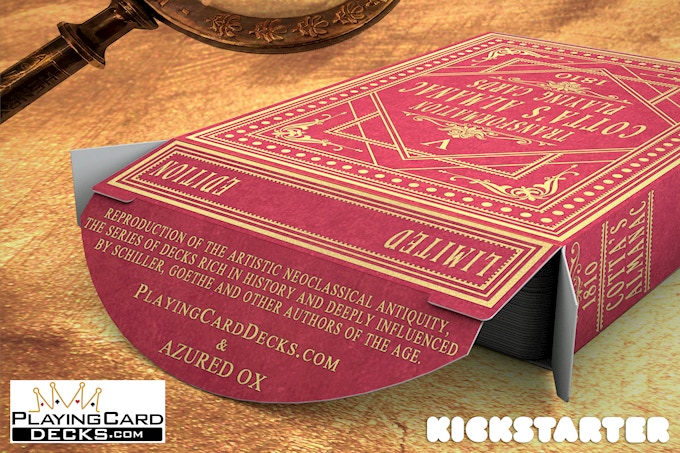
Each deck incorporated 52 cards for each of the 52 weeks of the year (these cards were not intended for a game) and addressed a different theme. This fifth deck, Aeneid or Pantheon, is inspired by a free translation of Virgil’s work by the playwright Friedrich Schiller, who also inspired earlier volumes in the series. This edition, published in 1810, includes original representations of gods and goddesses from Roman and Greek mythologies in the court cards. To identify these cards the words “Valet”, “Dame” and “Roi” are used, French terms for Jack, Queen and King. You can carefully read in the campaign the detailed information about the origin of the illustrations.
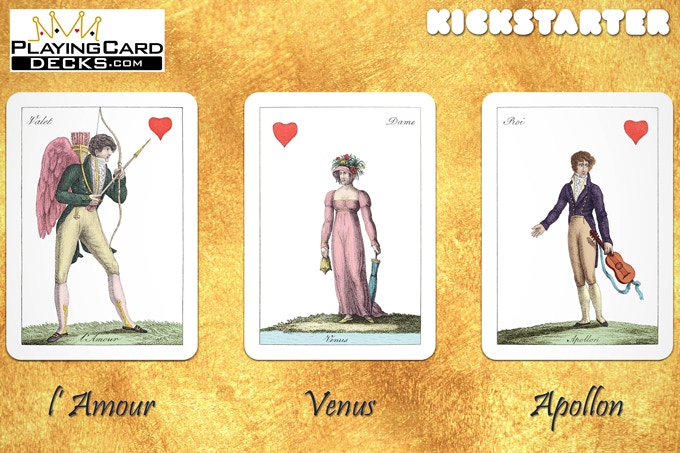
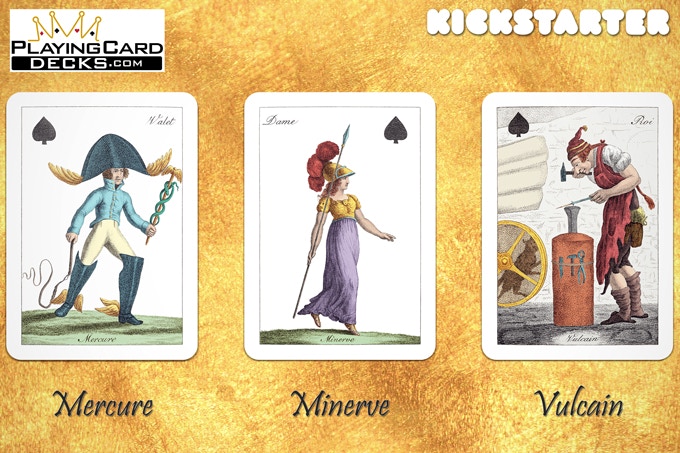
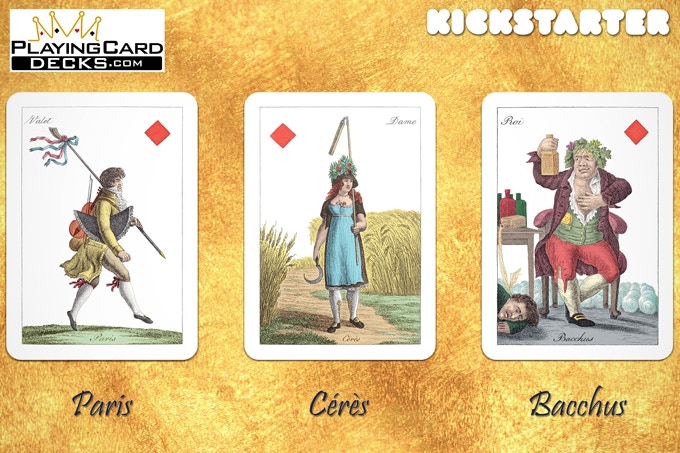
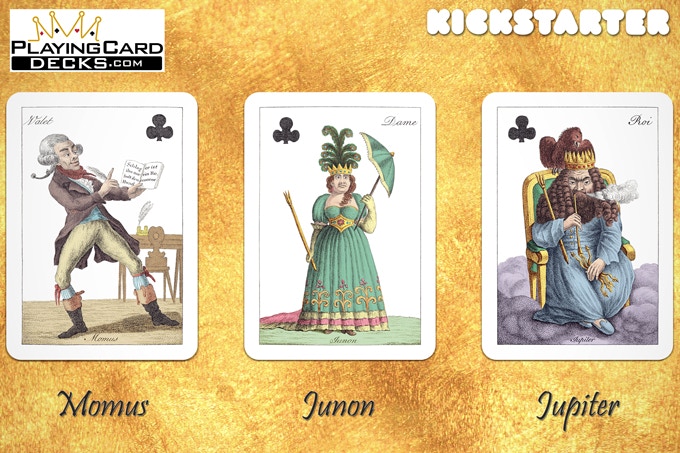
Unlike previous decks, this fifth edition was not produced as a cut deck, but rather as a cutout illustrated book. The numbered cards depict monochrome scenes with caricatures of famous people like Napoleon and a variety of comic situations that play with the pips on transformation cards.

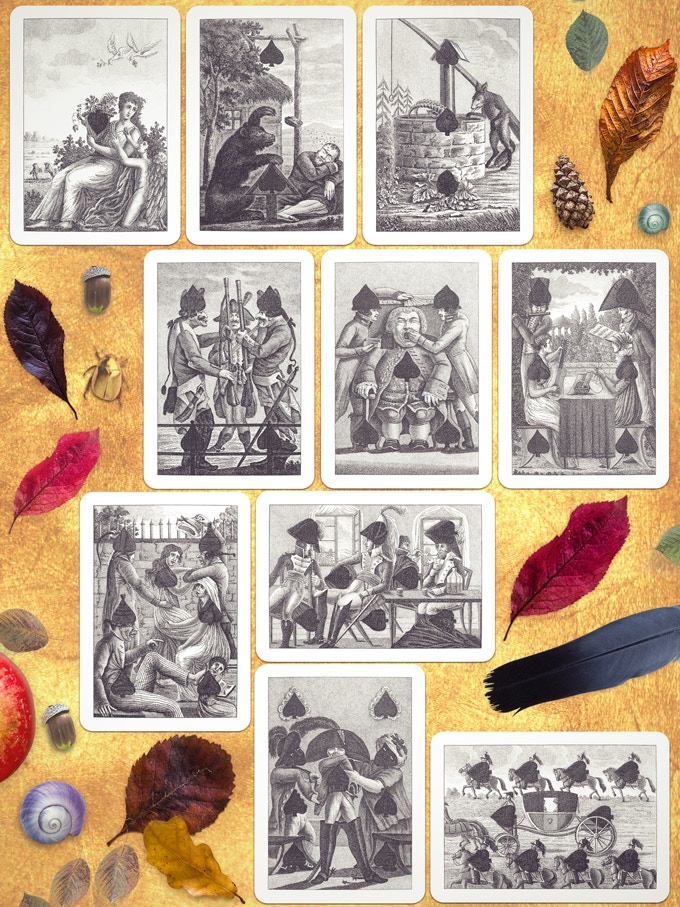
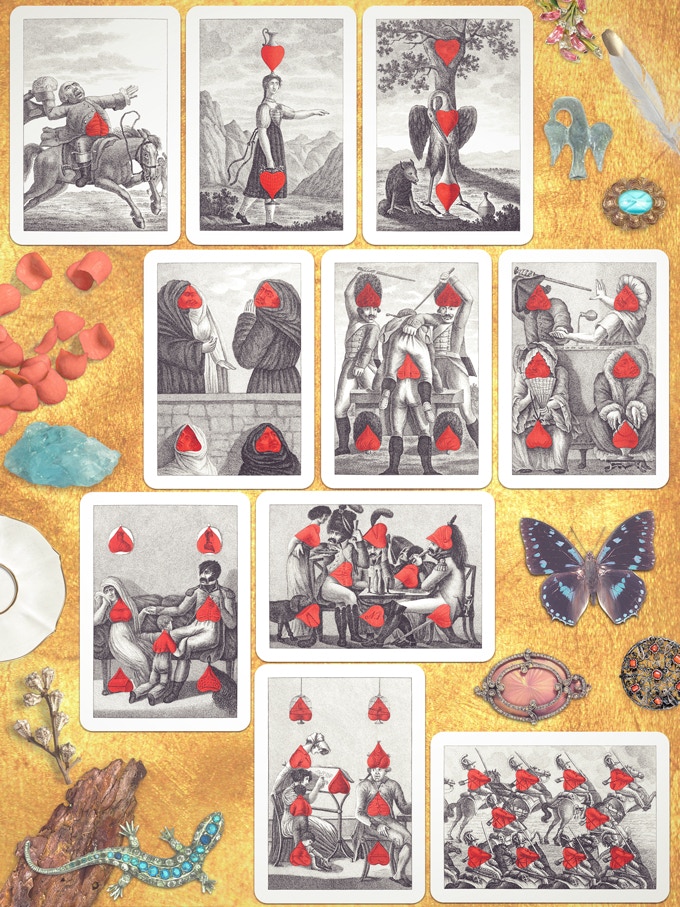
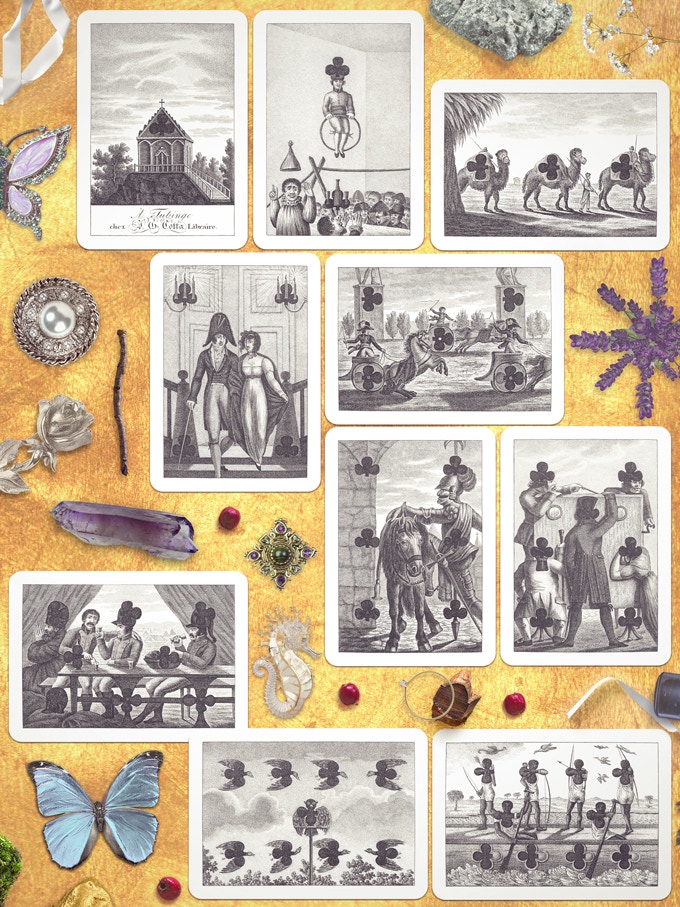
For the series, very unique tuck cases have been designed. The creators have used a color scheme based on Goethe’s experimental theory of optics and color, much better known for his essential role in German literature of the time (and good friend of Schiller). This theory talks about the psychological impact of colors on human emotions, something that inspired other scientists, philosophers and artists. The tuck case will look like a book and the spines of all the decks in the series together form a panorama of Cotta’s hometown of Tübingen.
Since the original cards had blank backs, matching color backs have been designed with a classic symmetrical pattern. In this case, both backs and tuck case will be purple and use metallic ink.
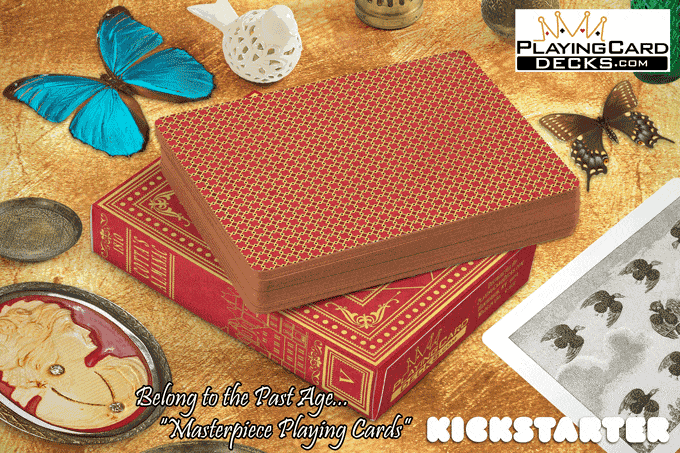
The decks will be printed by the USPCC and will have a recreation of the 52 cards plus two jokers and two extra collectible cards.
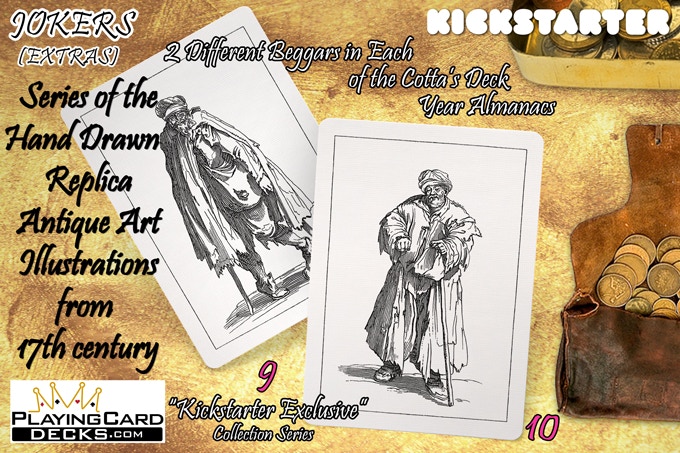
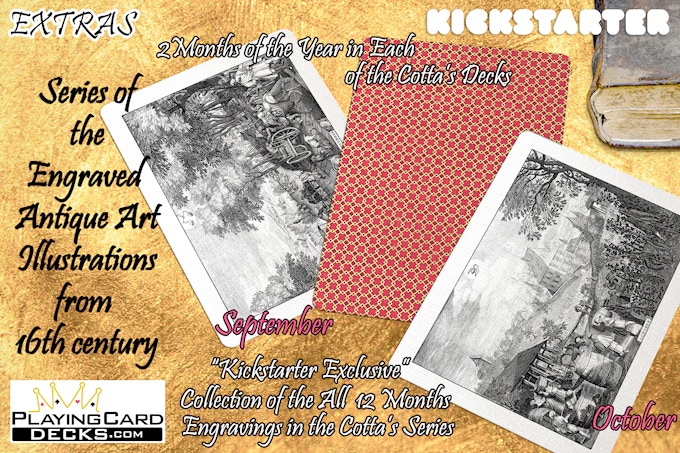
Two limited editions will be printed. The numbered edition, with a print run of 1000 decks, and the Standard Edition, with the same seal (unnumbered) and a slight change in the tuck case with black ink.
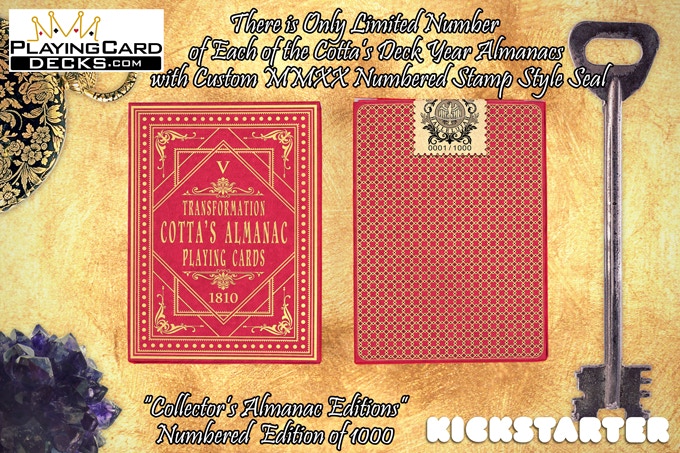
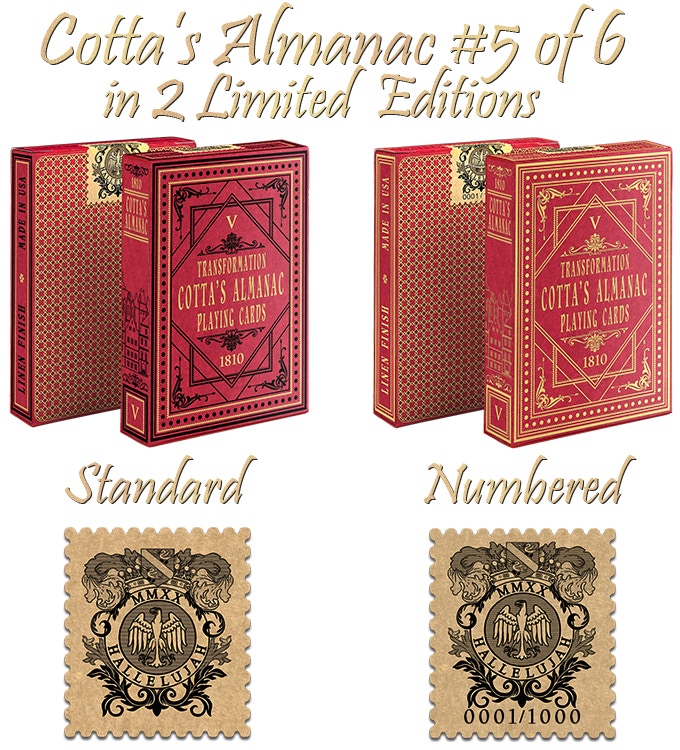
This is a collection steeped in history and a high-quality restoration to bring life back to the first transformation decks ever. Do not hesitate, visit the project website and raise your pledge.
Good luck!

